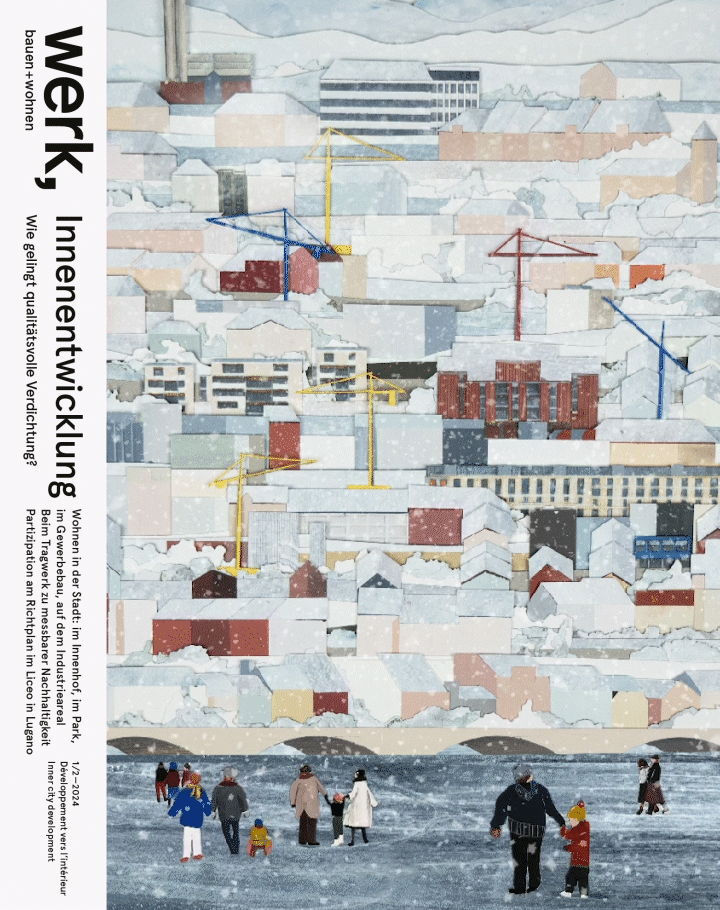werk, bauen + wohnen 1/2–2024

When The Neighbours Move Out
An acute housing shortage is perceptible everywhere. You feel affected yourself at the latest when your neighbours have to move to the near by suburbs or to an agglomeration. Although we are fully aware of the changes to the social fabric of the city, of how neighbourhoods are being transformed and existing buildings are being replaced, we inevitably think to ourselves: but when will this affect me? For the past 20 years, Switzerland has been experiencing a boom, and it is almost impossible to take a walk in a neighbourhood without encoun tering a forest of construction sites. Many people note these changes and complain about the densification that has been going on for years. Yet this is a politically desirable tendency and one that makes sense — not least in ecological terms. After all, in 2014 the Swiss electorate approved a revision of the spatial planning laws. This revision was followed by the political requirement for inward densification.
As a result the outlook for spatial planning changed radi cally— a milestone with which the problem of urban sprawl could be seriously tackled in the future — or that was at least the hope. Housing was to be built where people already live, or on sites that are already serviced. Of course, there are many other themes associated with internal development, such as the reduction of building zones or questions about the development of transport, which we cannot address in this issue. In addition, climate change and the biodiversity emergency have led to the emer gence of new questions in recent years. These aspects must also be addressed.
The range of themes of internal development is truly diverse and therefore in this issue we have focussed on housing. Housing is where the shoe pinches worst. At the same time sociological studies show that it is in already dense situations in the inner city that increased density is best accepted. It is here that the questions about density, green space, sufficiency, and integration in the existing fabric are most urgent. And it is also here that solving them is particularly tricky. The examples in this issue present approaches that indicate how this kind of densification can succeed. — Christoph Ramisch, Roland Züger